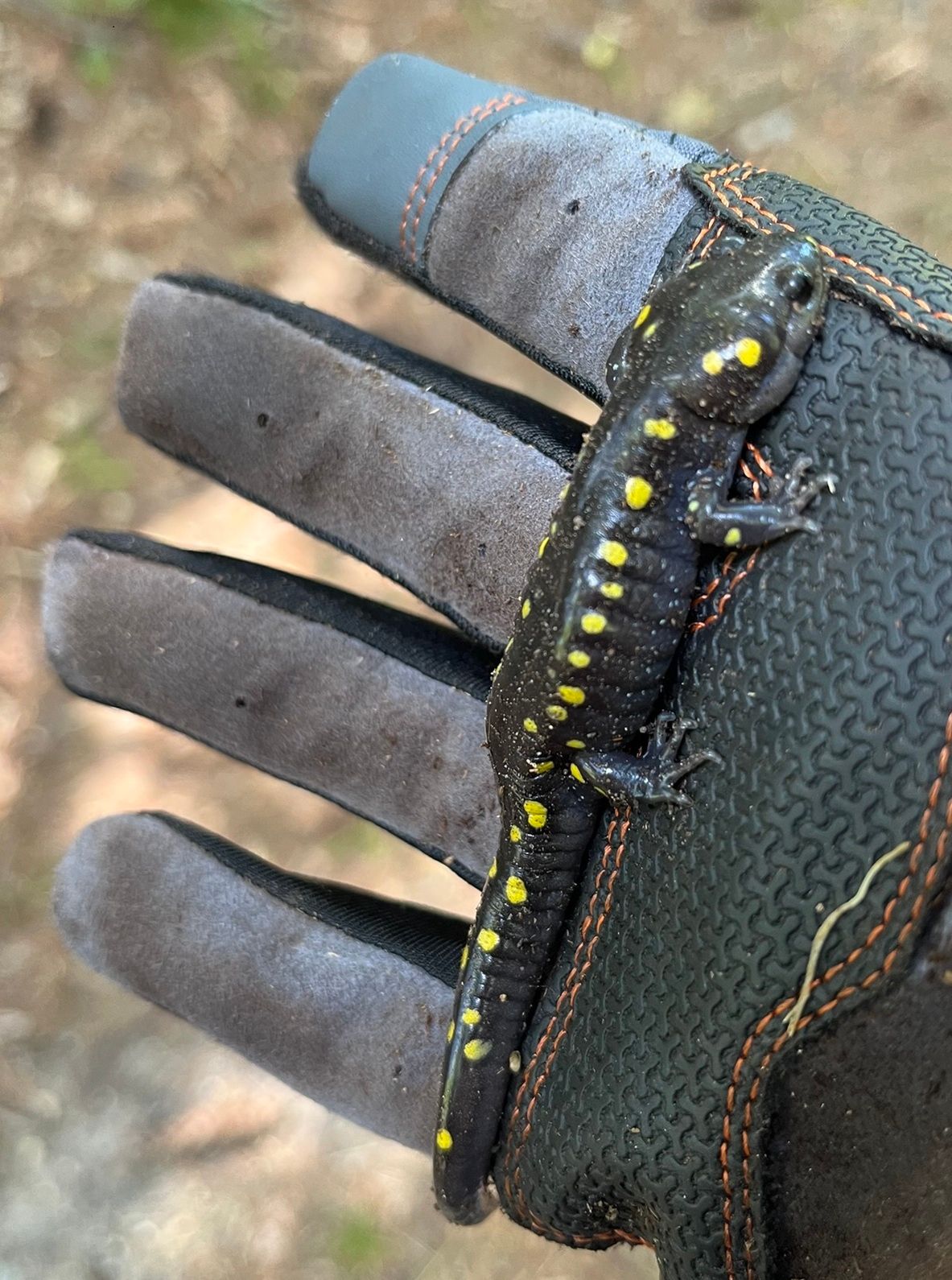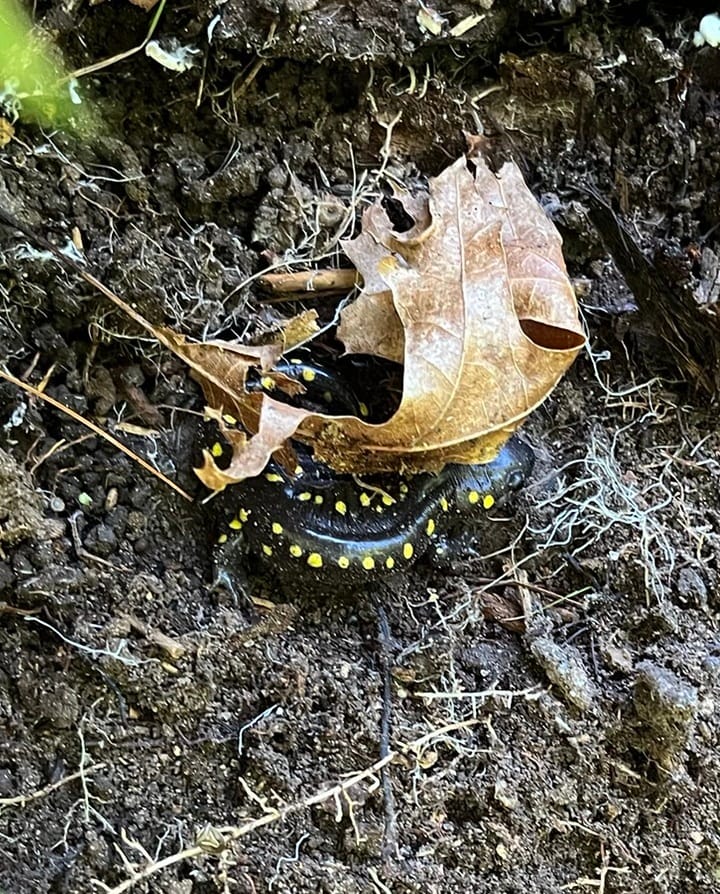WILDLIFE OF THE WEEK
Spotted Salamander
One of my favorite things about writing for Gulo in Nature is receiving nature questions and stories from readers. Last week, one reader asked about a slow-moving, speckly critter that had crawled out of his woodpile in Southern Massachusetts. I was excited and jealous to identify his new neighbor as a spotted salamander (Ambystoma maculatum), a large forest-dwelling amphibian native to the Eastern U.S. that spends most of its time underground. While I’ve never had the pleasure of meeting one myself, I’ve read about them plenty and heard many great stories about how they hole in woodpiles and under rocks in the Fall to tough out the Winter. Spotted salamanders absolutely deserve their own Wildlife Spotlight post on the blog, which I’m sure they’ll get soon. Among their many fascinating attributes, one in particular stands out to me: the eggs of these secretive amphibians have tiny algae living inside them that use up their wastes, enrich them with oxygen, and produce extra sugar for the developing embryo by photosynthesis! This is one of the only known examples of vertebrate animals getting the sun’s energy from internal symbionts.
If you’d like to submit your own photos and nature questions for expert consultation and fun facts, check out the Gulo in Nature Patreon!

A chubby spotted salamander (Ambystoma maculatum) that turned up in one reader’s woodpile as he was preparing to split wood for Winter.

NATURALIST WORD OF THE WEEK
Nivicolous (adj.) - (an animal or plant) living in snow or snow-covered habitats.
Want more Gulo in Nature?
▶ Join the Patreon to get your nature questions answered, have personalized consultations, and more!
▶ Buy Charles a coffee to say thanks and keep the nature content coming!
▶ Have a cool recent nature sighting? A burning question? Contact Gulo in Nature and let us know!
▶ Subscribe if you were forwarded this email and want to stay up to date with Gulo in Nature.


